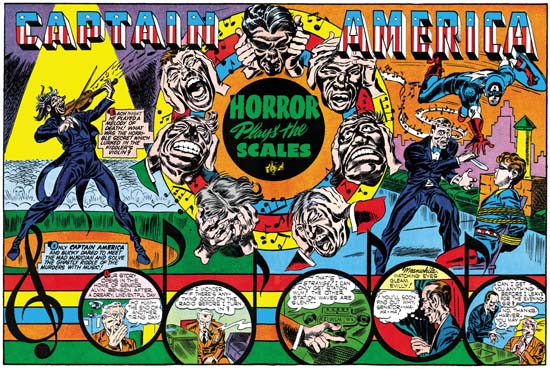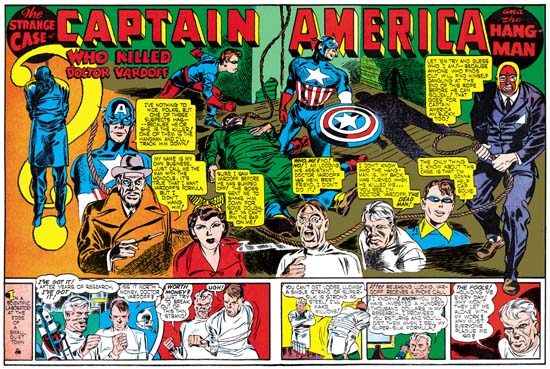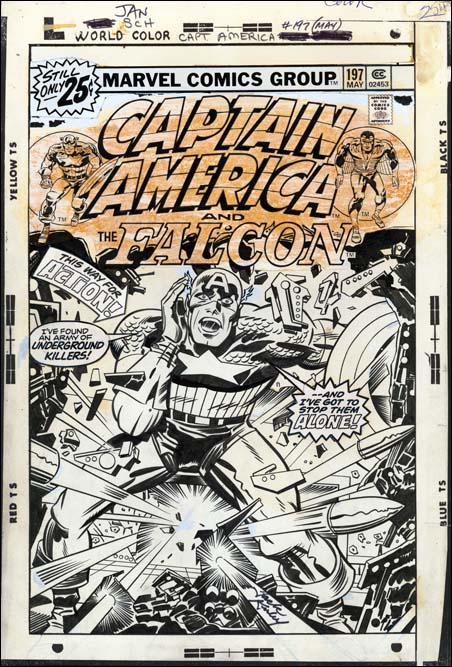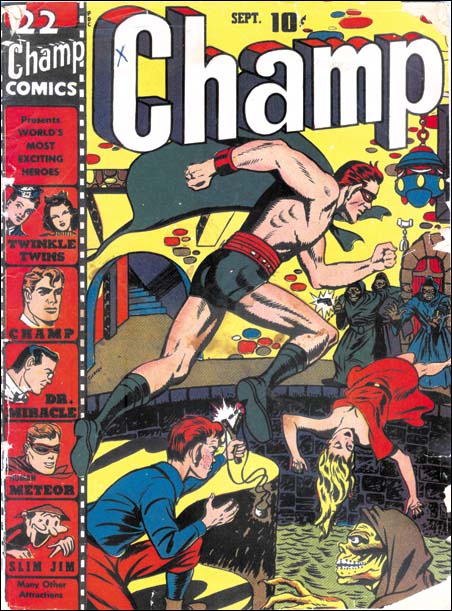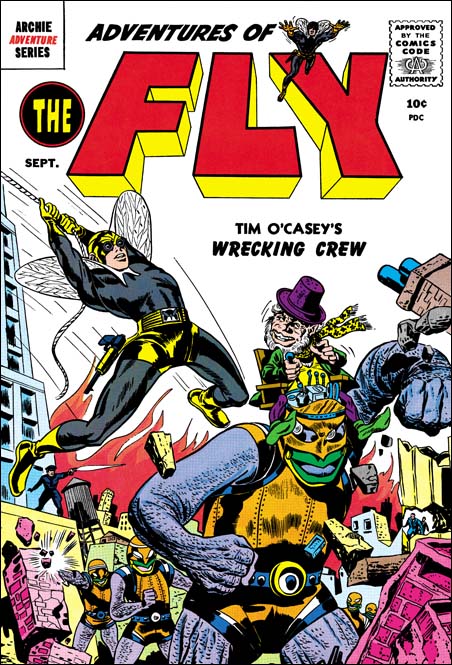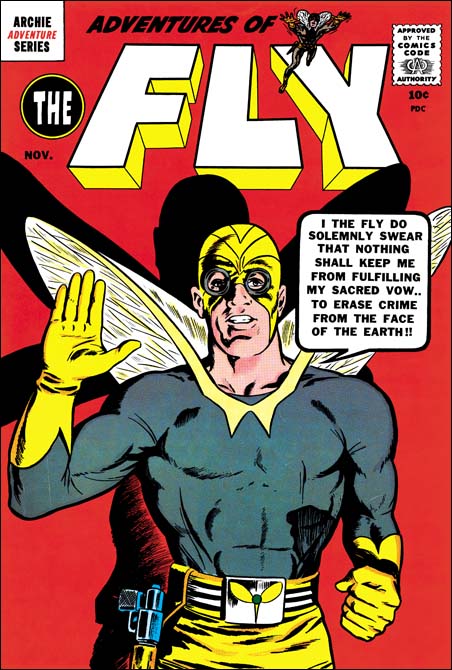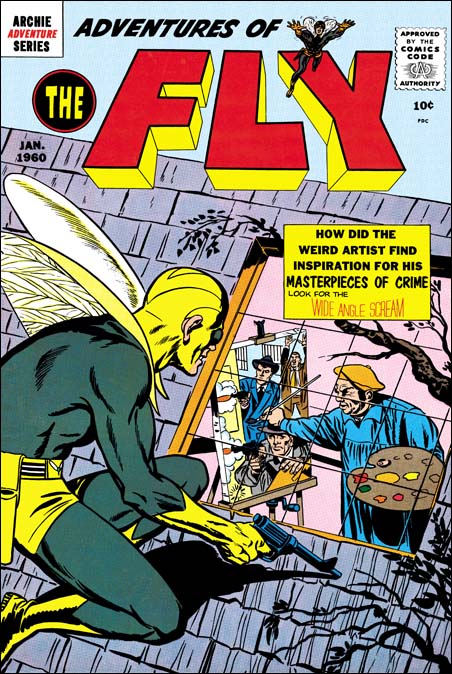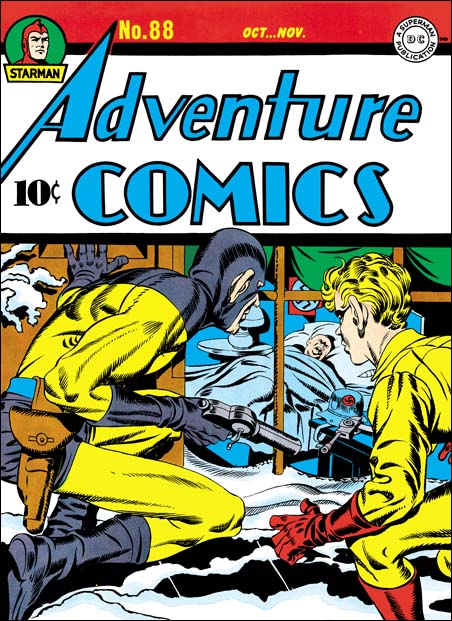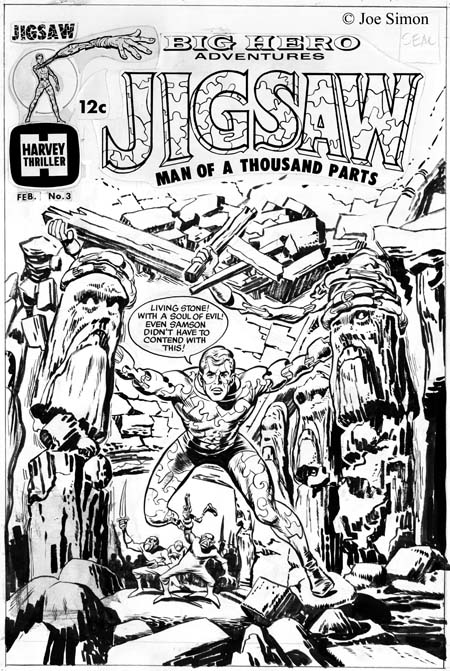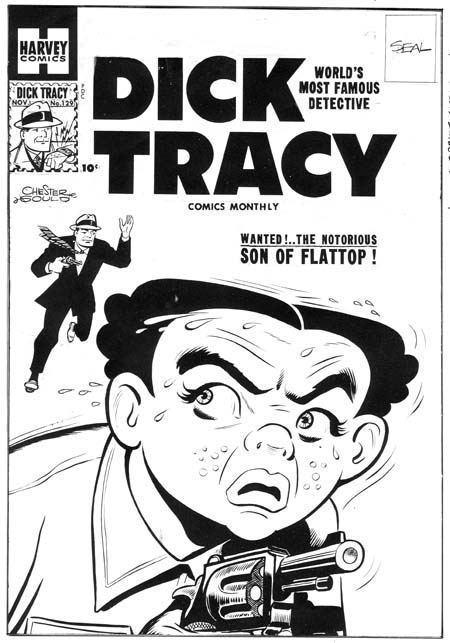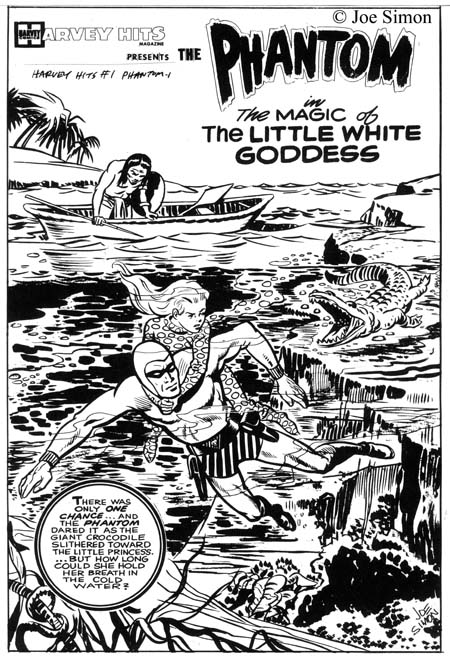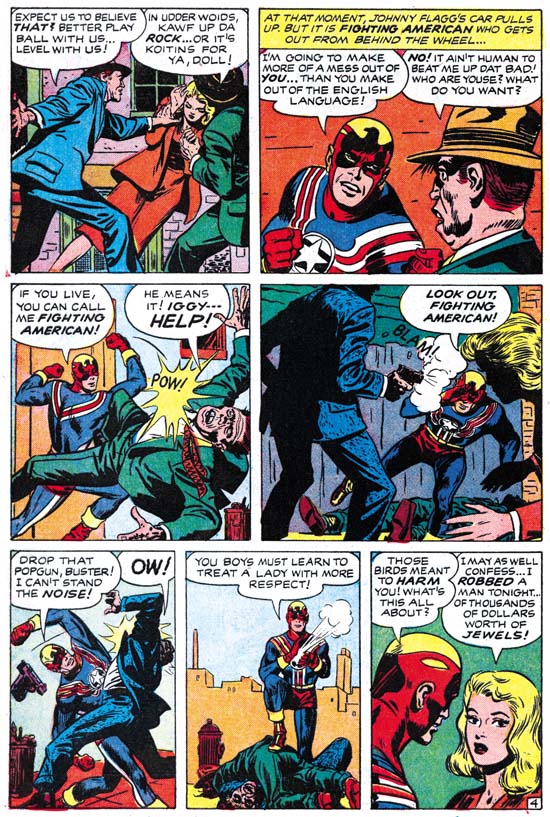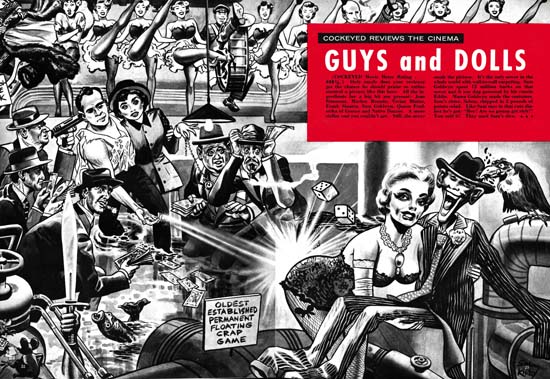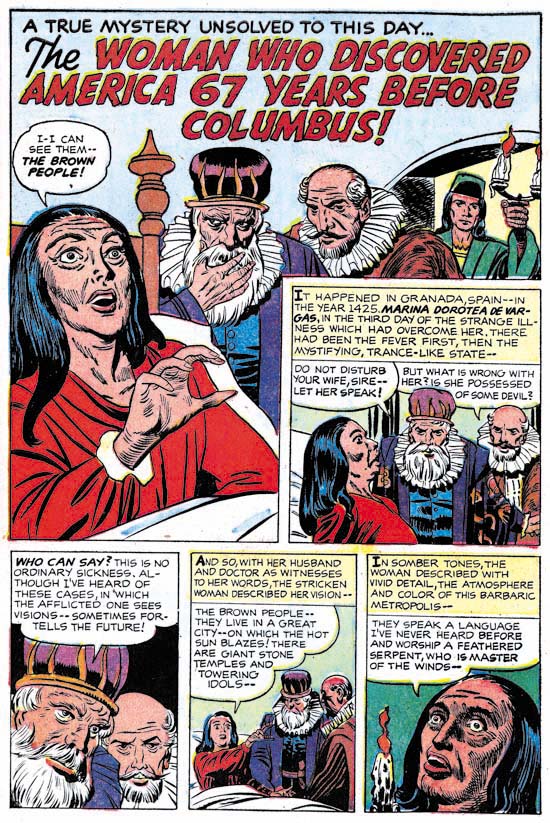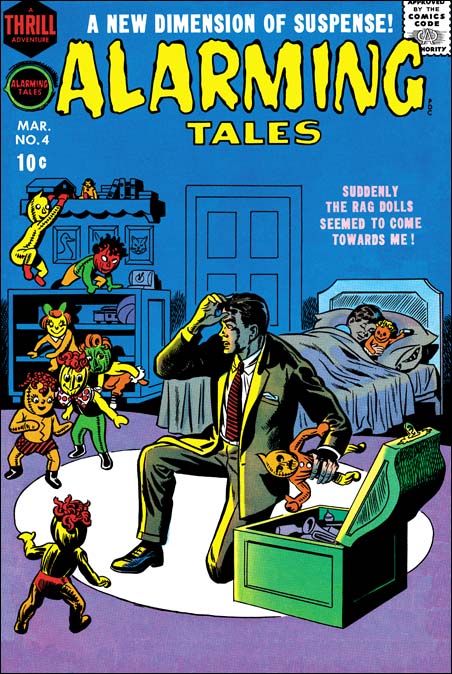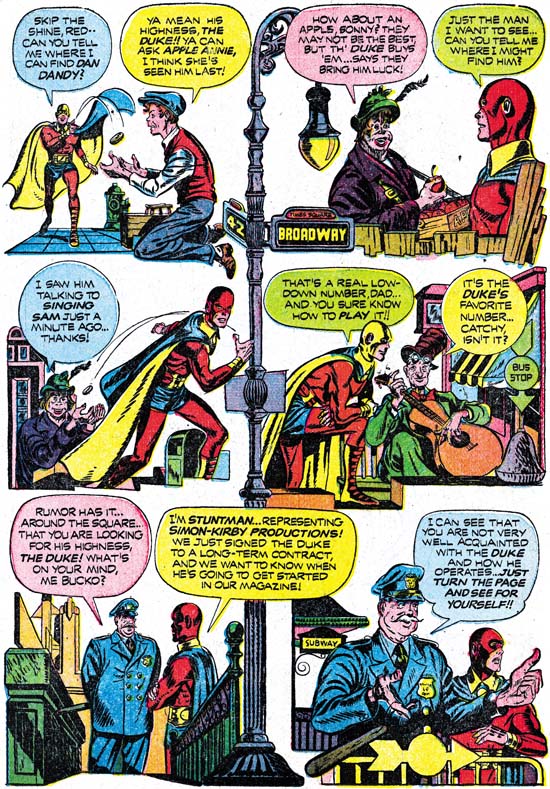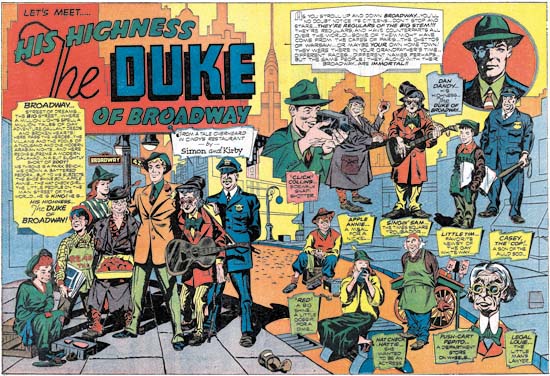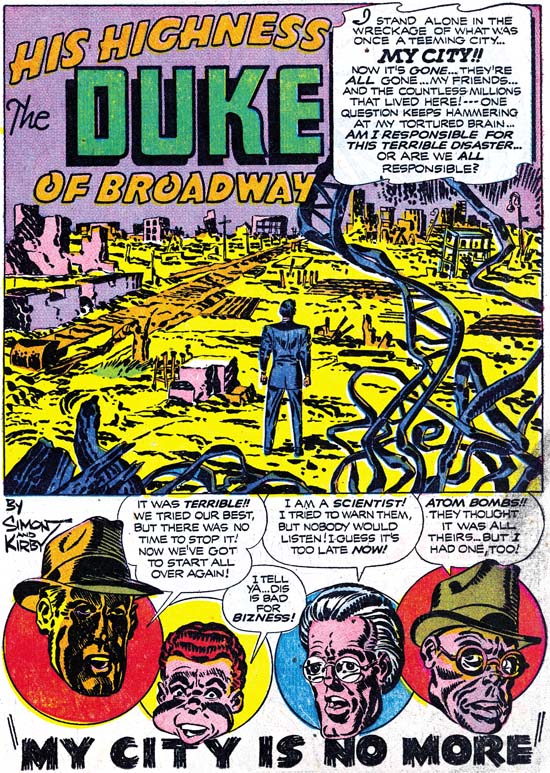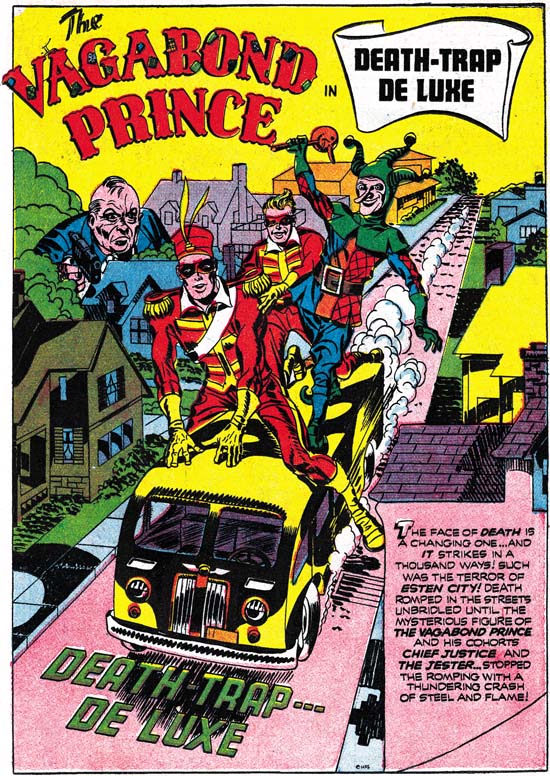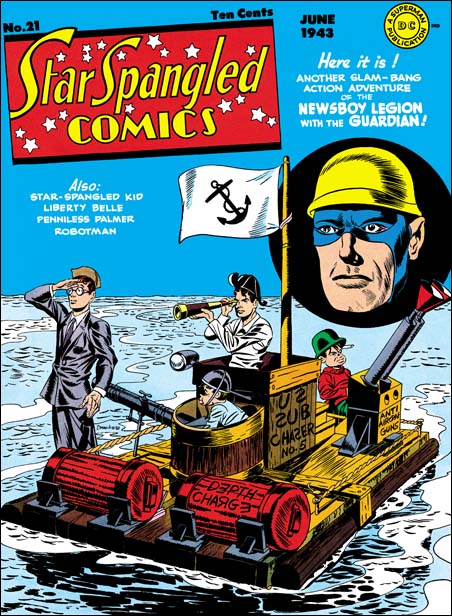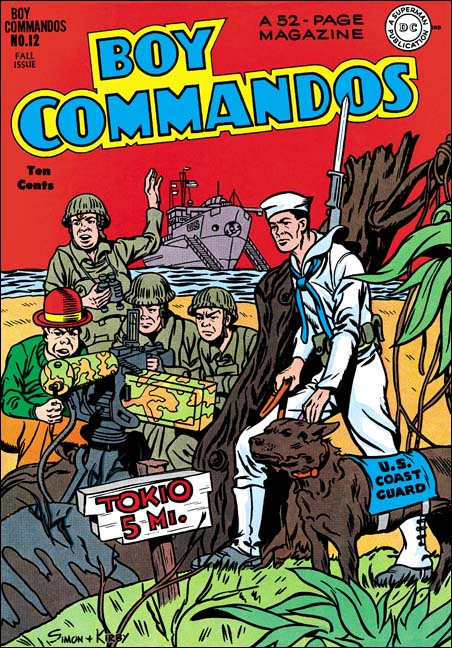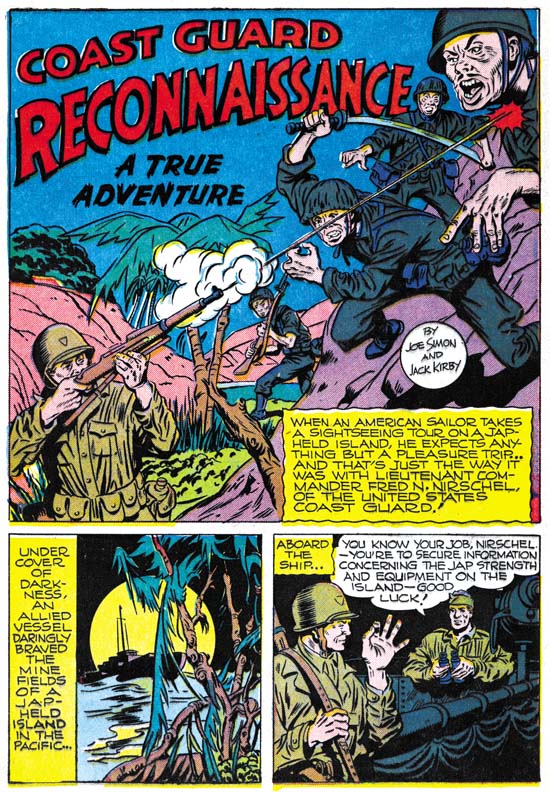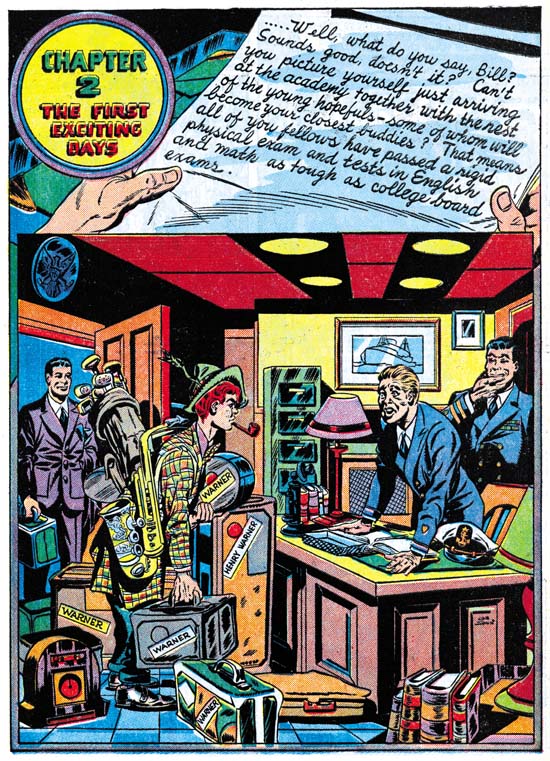I would now like to discuss another piece of work where I find so much that indicates that it was drawn by Joe Simon that I just do not understand why so many still credit it to Jack Kirby. Some explain the lack of Kirby touches as due to his discomfort with portraiture. I wonder why they do not have second thoughts about this explanation? In the recent Jack Kirby Collector #46 there are some portrait examples that Jack did later along with the photographs from which they were based. Typical Kirby touches, such as in his eyebrows are easily seen. Further “48 Famous Americans” includes story panels where Jack should have been very much at ease. Given this evidence it is difficult to accept the alleged Kirby portrait discomfort as a valid explanation.
During my visits to Joe I am really interested in hearing what Joe has to say and I am not concerned about convincing him of my opinions. I therefore never expressed to Joe my belief that he was responsible for this comic. However at one point Joe stated an interest in what Jack Kirby stuff had been reprinted recently. During one visit I brought some newer Kirby reprint books. Joe did not have much to say about any of it until he came across one with some pages from “48 Famous Americans”. At that point he exclaimed with exasperation “But I did all of that, Jack had nothing to do with it”. Despite his reputation, I have not found Joe as someone who always claims credit. I have provided Joe with a lot of restored Simon and Kirby material but only occasionally does Joe say he penciled a particular piece. I offer Joe’s statement as evidence, not proof. But I feel the art itself provides all that is needed to credit Joe Simon with this work.
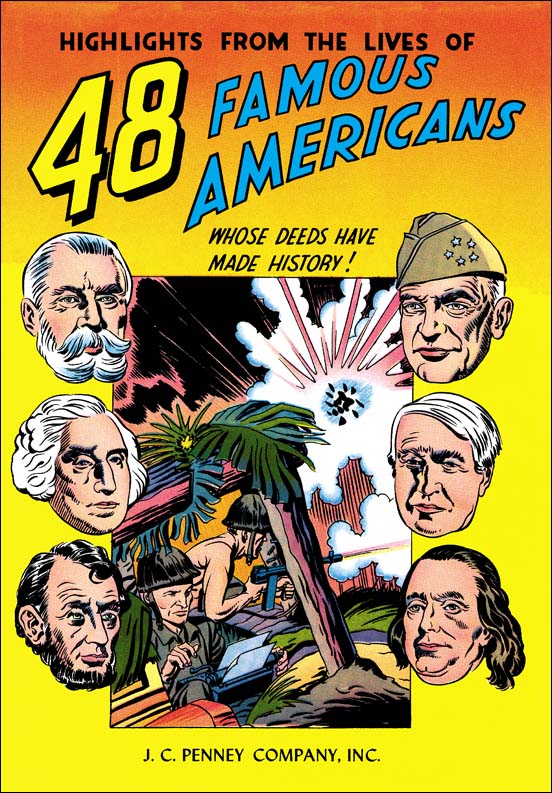
48 Famous Americans (1947) by Joe Simon
Look closely at the reporter in the foxhole. To me he looks like he was done by Simon, particularly the eyes. The use of floating heads is something we have seen from Joe before. In fact I am really at a loss to point to any Kirby like features on the cover.
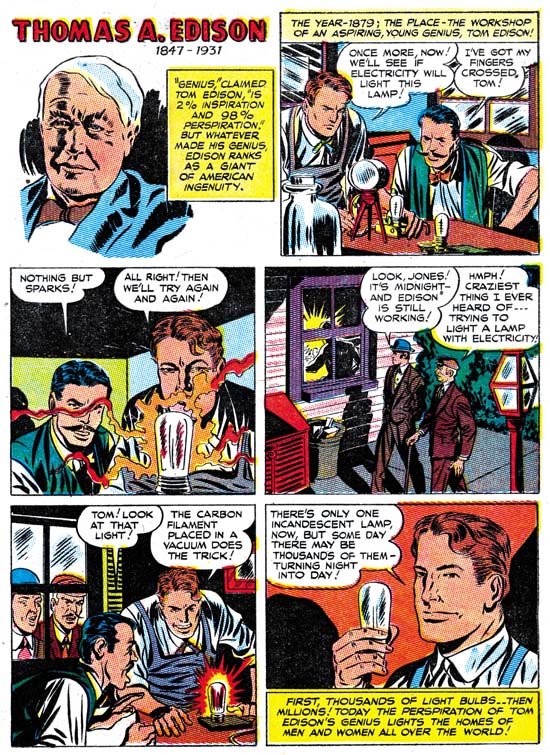
48 Famous Americans (1947) “Thomas A. Edison” by Joe Simon
One of the benefits to doing serial posts like this one is that it gives me a chance review work that I may not have looked at for some time. I have always felt that Joe was the penciler for 48 Famous Americans. But when I reexamined the comic again for this post I was surprised about how many more indications of Simon’s touch I could find. For instance I remarked in Chapter 5 that while working together with Jack Kirby on Captain America, Joe’s discontinued his use of combining the eyebrow and the eye into a single angular formation. Well this comic shows that statement to have not been completely correct. Here Joe frequently returns to the use of angular eyes as can be seen in panels 2, 3 and 5 of the Thomas A. Edison page. In my last chapter I remarked that Joe seemed to have a tendency to draw the hero with a long face only during the time that he worked on the Duke of Broadway, the Vagabond Prince and Kid Adonis (1946). Well in the 48 Famous Americans the long square face shows up occasionally as for example in the last Edison panel.
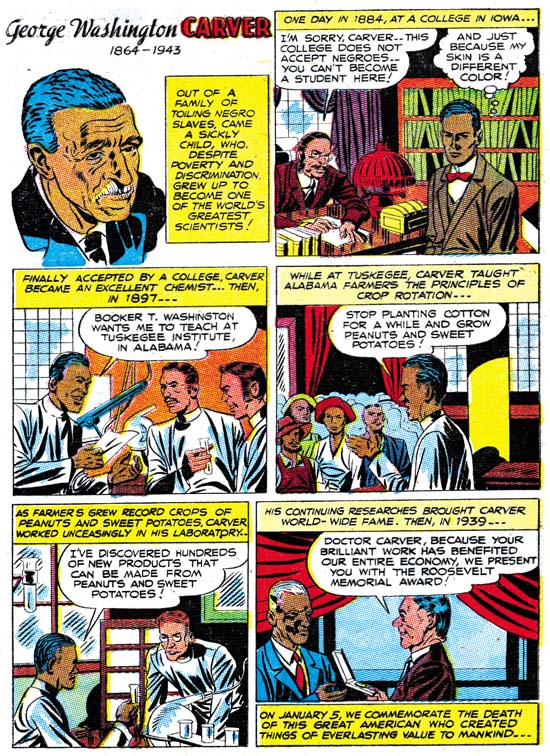
48 Famous Americans (1947) “George Washington Carver” by Joe Simon
George Washington Carver is another page with typical Simon features. The angular eyes show up in panels 2 and 4, the long face with a square jaw in panel 3. Although I did not have a chance to post an image of it, the skewed eyes found in the first page of the Fiery Mask story of Daring Mystery #6 (September 1940) also occurs in the first, Carver portrait panel.

48 Famous Americans (1947) “Jack Dempsey” by Joe Simon
We can only guess who made the choices as to which 48 Americans to include in this giveaway comic. I am sure the company that paid for this comic had something to say about including James Cash Penney. Sport figures do not play a big part in those selected. If famous sport people were going to be used, I can understand the selection of Lou (Henry Louis) Gehrig. But was Jack Dempsey really that obvious of a choice? Was it a coincidence that Joe Simon served in the Coast Guard during the war and, as shown in panel 6, Jack Dempsey did also?
I think Joe did a good job presenting the various short histories. I paricularly like Joe’s knockout punch in panel 5. But although I enjoy Joe’s story telling I often feel that Jack Kirby would have done it differently. Jack had a special affection for socko punches and did them in way that no other artist seemed able to duplicate. I like Joe’s falling Willard but I am also sure Jack would have done it very differently.
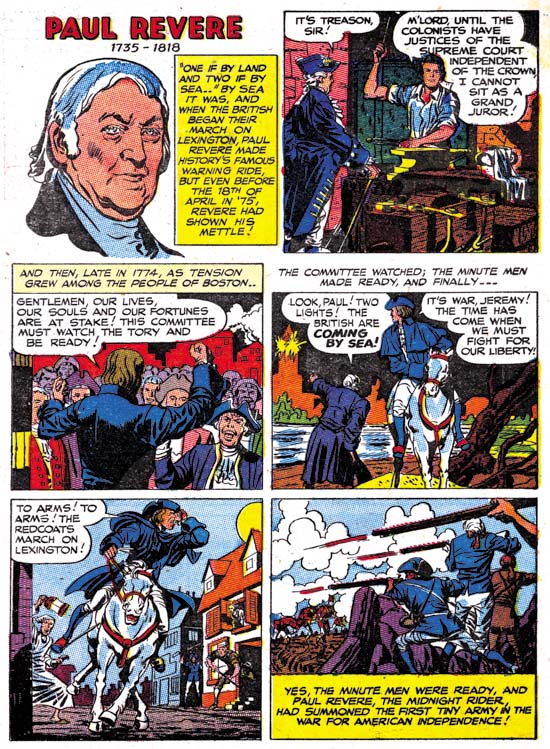
48 Famous Americans (1947) “Paul Revere” by Joe Simon
The Paul Revere page is another one that should have presented opportunities for Kirby, had he been the penciler, to provide his unique touch. But for the most part I do not find Kirby’s fingerprints here. The riding Revere of panel 5 is done really nicely, but not at all like the covers for Bullseye #2 or #4 or Boys’ Ranch #6. The only thing that reminds me of Kirby on this page, or for that matter one of the few in the entire comic, is the figure of the man with the lantern in panel 5. Frankly that is not too distinctive and I find a lot more Simon touches such as in panel 3.
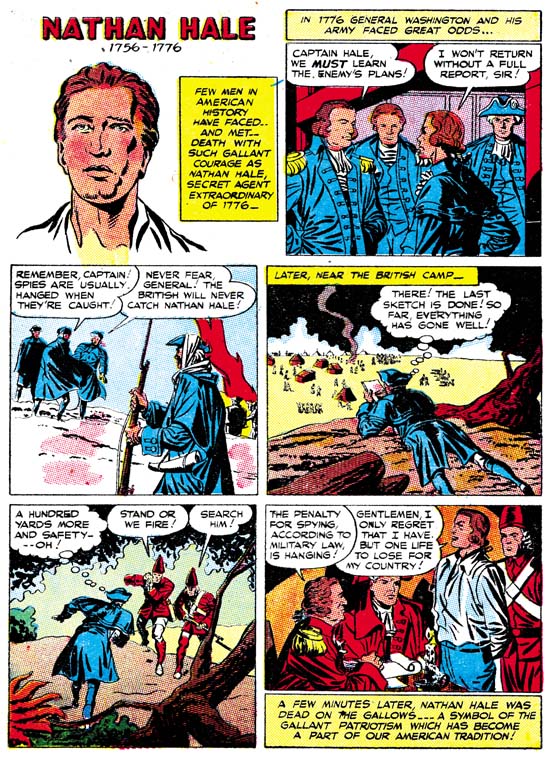
48 Famous Americans (1947) “Nathan Hale” by Joe Simon
I thought I would provide yet another page, Nathan Hale, which I would have thought would have provided Jack Kirby the chance to add his own personal vision, that is had he actually been the artist. But again although I find drawing that looks like it was done by Joe Simon, I do not find examples that indicate Jack’s involvement.
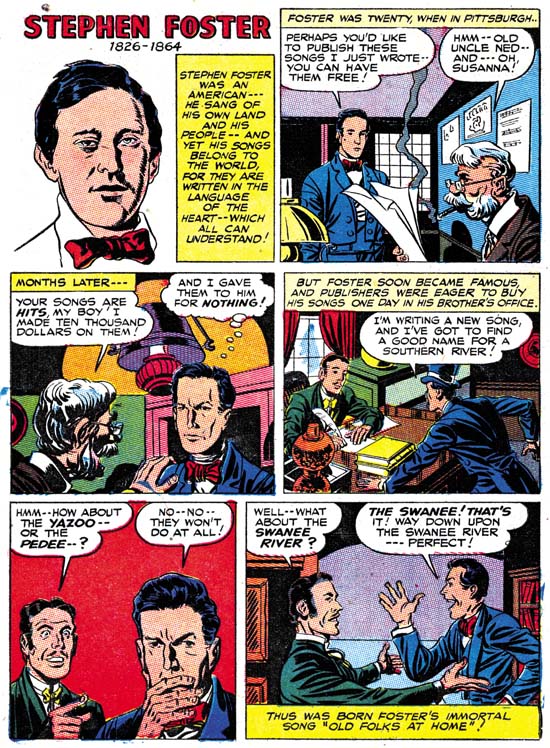
48 Famous Americans (1947) “Stephen Foster” by Joe Simon
The socko punches are not the only Kirby trademark. Jack was also fond of expressive eyebrows. As I mentioned at the start of this post examples of Jack’s portraits provided by The Jack Kirby Collector show these Kirby eyebrows. But in 48 Famous Americans I do not find these special eyebrows. The only example I found was that of the man on the right in panel 5 of the Foster page. But I got to say this is hardly a convincing example of Kirby eyebrow. Another Kirby trait is his exaggerated perspective. One of his famous use of this occurs in depicting a hand pointing. It is one of those drawing techniques that other artists do not seem able to duplicate. The pointing hand for of the man in panel 5 is simply not drawn the way Jack would have done it.
When I choose images for this blog I try to select scans that provide good examples of whatever point I am trying to make. So yes I did go through 48 Famous Americans looking for pages that looked the most like they were done by Joe Simon. But I also included pages that should have provided subjects that I would have expected Jack to shine in. But in all these Kirby favorable scenes what I find reminds me more of Joe Simon. I also looked for pages that I thought look the most like possible Kirby efforts. I did find some, besides the ones I mentioned above look at the old man in panels 2 and 3 of the Foster page. I am not saying these examples were drawn by Kirby, only that they look like they could have. Frankly considering Joe’s often use of swiping I would have expected even more Kirby-ish drawing then I actually found. To repeat what I said at the start of this chapter, I find the 48 Famous Americans to looks so consistently like the effort of Joe Simon that I really do not understand why so many people attribute it to Jack Kirby.
Art by Joe Simon, Chapter 9, American Royalty
Art by Joe Simon, Chapter 11, The Party Is Over
